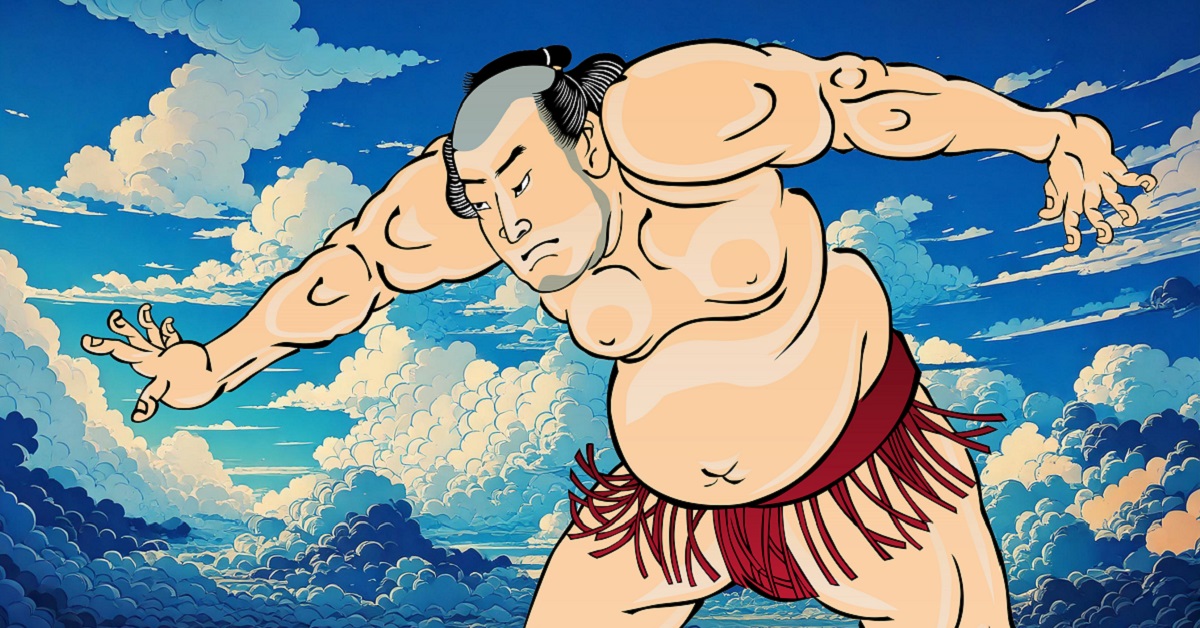Beneath the sumo ring lies Shizumemono (鎮物, “shizumemono”), a set of seven sacred offerings. These items are dedicated to the gods, praying for the safety of wrestlers, their victories, and the prosperity of the people. This hidden ritual transforms sumo from a simple sport into a deep cultural and spiritual experience.
The Meaning of Shizumemono
In sumo, Shizumemono (鎮物, pronounced “shizumemono”) refers to the sacred offerings buried in the center of the ring (dohyō). These are not mere decorations but part of an ancient Shinto ritual passed down for centuries. The dohyō is considered a sacred space where deities descend, and burying offerings there is a way of showing gratitude to the gods while praying for the safety of wrestlers, the well-being of the audience, and the prosperity of the nation.
This act also carries the meaning of purifying the ring itself. While modern audiences often see sumo as a sport, at its core it remains deeply religious, and Shizumemono symbolizes this spiritual foundation.
The Seven Sacred Items of Shizumemono
Shizumemono consists of seven types of auspicious offerings. Each has symbolic meaning rooted in Japanese culture and nature.
| Item | Symbolic Meaning |
|---|---|
| Rice | Symbol of life and abundance, praying for a good harvest |
| Kombu (kelp) | Wordplay on “yorokobu” (joy), representing prosperity and happiness |
| Chestnut | Known as “kachi-guri” (winning chestnut), a prayer for victory |
| Nut of the kaya tree | Believed to ward off evil and protect from disasters |
| Dried squid | Symbol of prosperity and longevity, as it keeps well |
| Victory chestnut | Stronger symbol of triumph for wrestlers |
| Salt | Represents purification and protection against evil spirits |
Although hidden beneath the soil, these offerings serve as a silent prayer sustaining every match fought above them.
History and Origins of Shizumemono
The tradition of Shizumemono originates from jichinsai (ground-pacifying rituals) of ancient Japan. Before constructing buildings, people buried offerings such as rice, sake, and fish to calm the local deities and protect the site. Because sumo began as a ritual dedicated to the gods, the dohyō itself came to be treated as sacred, and this practice was adopted.
Even after sumo spread as popular entertainment during the Edo period, this ritual was preserved. Its continuation into the present day demonstrates that sumo is not merely a contest of strength but a cultural act of devotion to the divine.
Shizumemono and the Dohyō Ceremony
Shizumemono is buried during the dohyō matsuri (ring consecration ceremony) held before each tournament. Referees (gyōji) and Shinto priests dig a small hole at the center of the ring, place the offerings inside, and then mark the spot with sacred sakaki branches and ritual paper streamers (gohei). The entire ring is purified with rice and salt.
| Stage | Details |
|---|---|
| Purification | Rice and salt are scattered to cleanse the ring |
| Burial | Seven sacred items are placed into the hole |
| Marking | Sakaki branches and gohei signify the sacred presence |
| Prayer | Prayers are offered to the four directions for safety and prosperity |
This ceremony, often open to the public, allows spectators to witness the spiritual foundation of sumo before the excitement of the matches begins.
Difference Between Shizumemono and Purifying Salt
Spectators are most familiar with the act of wrestlers throwing purifying salt before their bouts, but it should not be confused with Shizumemono.
| Aspect | Shizumemono | Purifying Salt |
|---|---|---|
| Timing | Buried once before the tournament begins | Thrown before each bout |
| Role | Protects the ring, ensures safety and prosperity | Cleanses wrestlers and wards off evil spirits |
| Duration | Remains buried throughout the tournament | Performed repeatedly during matches |
| Symbolism | Silent, enduring prayer | Dynamic, visible purification |
Both practices share the themes of purification and prayer, complementing each other as the spiritual and ritual balance of sumo.
Shizumemono’s Appeal to Foreign Spectators
For foreign visitors, the idea of burying offerings beneath a sports arena is unusual and fascinating. Shizumemono reveals that sumo is not only a contest of physical strength but also a cultural and spiritual ritual.
| Perspective | Japanese View | Foreign View |
|---|---|---|
| Dohyō | Sacred stage | Sporting arena |
| Shizumemono | Prayer to the gods | Curious cultural tradition |
| Salt | Ritual purification | Mysterious custom |
| Gestures | Continuous expressions of respect | Beautiful and unique tradition |
Understanding Shizumemono transforms sumo from “just a sport” into a cultural experience.
How Shizumemono is Buried
The burial process itself follows a set of precise ritual steps:
| Step | Process |
|---|---|
| Digging | A small hole is opened at the center of the ring |
| Placing | The seven offerings are respectfully placed inside |
| Covering | The hole is filled with purified soil and compacted |
| Marking | Sakaki branches and gohei are placed to signify sacredness |
Through this process, the dohyō becomes not only a sporting stage but also a sanctified space for divine presence.
Conclusion
Shizumemono (鎮物, “shizumemono”) refers to the seven sacred offerings buried in the sumo ring to pray for safety, victory, and prosperity. Rooted in ancient ground-purification rituals, it continues to this day as an essential part of sumo tradition.
Knowing about Shizumemono changes how one experiences sumo: beyond the clash of strength, it becomes clear that every bout takes place upon a foundation of silent prayers and sacred rituals. For both Japanese and foreign spectators, realizing this adds a profound layer of meaning to the spectacle of sumo.





コメント